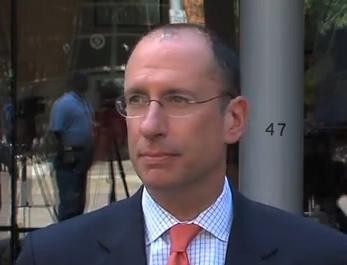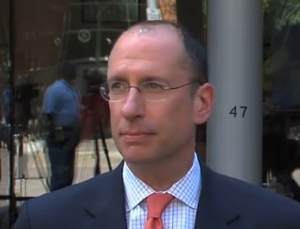
Superintendent Recommends $1.55 Billion CIP
Superintendent Joshua P. Starr is recommending a $1.55 billion Capital Improvements Program (CIP) for Montgomery County Public Schools (MCPS) that, over the next six years, would add hundreds of elementary school classrooms and ease overcrowding caused by years of dramatic enrollment growth.
 According to an MCPS new release, Starr’s CIP recommendations places a priority on increasing the number of classrooms and upgrading the district’s aging infrastructure, including Heating, Ventilation, and Air Conditioning (HVAC) systems. Starr’s CIP also keeps many previously approved construction projects on schedule.
According to an MCPS new release, Starr’s CIP recommendations places a priority on increasing the number of classrooms and upgrading the district’s aging infrastructure, including Heating, Ventilation, and Air Conditioning (HVAC) systems. Starr’s CIP also keeps many previously approved construction projects on schedule.
MCPS enrollment has increased by about 14,000 students over the past six years, and the majority of that growth, nearly 90 percent, has taken place in elementary schools. Over the next six years, MCPS enrollment is expected to grow by an additional 11,000 students. In that time, MCPS enrollment has increased more than any district in the state of Maryland.
“This CIP will begin to address the dramatic space needs of our district and provide some relief to our elementary schools, which are bursting at the seams,” Starr said. “However, we will need to make additional investments in the future if we are going to provide 21st century learning facilities for the students who are here today and those who are coming in the future.”
Starr released his Fiscal Year (FY) 2015-2020 Capital Improvements Program recommendations on Monday (Oct. 28) and is proposing 14 new classroom addition projects, including 12 at elementary schools. He also is recommending that the construction of five new schools and some, but not all, revitalization/expansion projects (previously called modernizations) be kept on schedule.
Dr. Starr’s $1.55 billion recommended CIP represents a $183.9 million increase over the current CIP (FY 2013-2018), but is far less than the district’s actual need. It would require a $2.2 billion CIP to meet all of the district’s pressing facility, infrastructure, and technology needs. Given the fiscal constraints in the county, Dr. Starr said it would be irresponsible to propose such a large increase to the CIP without the promise of additional funding from the state.
MCPS routinely receives less than its fair share of state funding, relative to the size of the district’s enrollment. For this fiscal year (FY 2014), MCPS requested $149.3 million in state aid for school construction and received $35.1 million.
“I look forward to working with our county leaders and state legislators on ways we can increase state funding and meet all of our capital needs,” Dr. Starr said. “I am hopeful that a solution can be found, but I have to develop my budget based on what I know, not on what I hope.”
Starr thanked the three MCPS employee associations—the Montgomery County Education Association, the Montgomery County Association of Administrators and Principals, and the Service Employees International Union, Local 500—as well as the Montgomery County Council of Parent Teacher Associations for their assistance in developing these recommendations.
A new six-year CIP is approved every two years and includes investments in four general categories—capacity projects, such as new schools and classroom additions; revitalization/expansion projects that upgrade and expand existing schools; infrastructure improvements; and technology.
Starr’s recommendations will now be reviewed by the Montgomery County Board of Education, which will hold a CIP work session on Nov. 7, at 6 p.m. The Board will then hold two public hearings on Nov. 11 and Nov. 14. More information about how to register to testify at those hearings is available on the Board’s public participation website.
The Board is expected to approve a CIP request on Monday, November 18. That request will then be submitted to the County Executive and County Council for consideration.
Building Capacity
One-quarter of Dr. Starr’s recommended CIP will go toward projects aimed at building capacity, especially at elementary schools, where enrollment has grown by 12,400 students in the past six years. There are currently 335 relocatable classrooms being used at MCPS elementary schools.
“We are facing space challenges in many of our elementary schools today,” Dr. Starr said. “If approved, my CIP will ease these challenges in some areas and will also help us get ready for when that enrollment bubble hits our secondary schools.”
 The biggest area of growth has been in the Downcounty Consortium (DCC), which has added more than 4,100 elementary school students in the past six years. Last year, Dr. Starr requested that a capacity study be conducted of 12 DCC schools, to determine the space needs in that area.
The biggest area of growth has been in the Downcounty Consortium (DCC), which has added more than 4,100 elementary school students in the past six years. Last year, Dr. Starr requested that a capacity study be conducted of 12 DCC schools, to determine the space needs in that area.
Starr’s recommendations include new classroom addition projects at 12 elementary schools. Five of the new projects are in the Downcounty Consortium, including Brookhaven, Glen Haven, Kemp Mill, Sargent Shriver and Highland elementary schools. The remaining seven elementary school addition projects are at Ashburton, Lucy V. Barnsley, Burtonsville, Diamond, Kensington-Parkwood, Christa McAuliffe, and Judith Resnik elementary schools.
The CIP also maintains the completion dates of several other elementary school capacity projects that have been previously approved, including additions at six schools (Waters Landing, Arcola, Bethesda, North Chevy Chase, Rosemary Hills, and Wood Acres elementary schools), and new elementary schools in the Clarksburg, Northwest, and Richard Montgomery clusters.
Starr’s recommendations include new additions at two secondary schools—North Bethesda Middle School and Bethesda-Chevy Chase High School. The CIP also maintains the completion dates for previously approved secondary school capacity projects, including classroom additions at Julius West Middle School and Clarksburg High School, and new middle schools that will serve the Clarksburg/Damascus and Bethesda-Chevy Chase clusters.
Revitalizations/Expansions
Nearly half (47 percent) of Dr. Starr’s recommended CIP will be spent on revitalization/expansion projects, previously known as modernizations. Dr. Starr changed the term to more accurately reflect the impact of these projects.
“Revitalization/expansion projects are not only about replacing old buildings, but almost always add capacity to the district,” Starr said. “We are focused on building schools that support the development of 21st century knowledge and skills and are also built to last.”
Starr’s recommendations do not add any new revitalization/expansion projects to the CIP, but maintain the completion dates on six previously approved projects—Bel Pre, Candlewood, and Rock Creek Forest elementary schools; Wheaton and Seneca Valley high schools; and the Thomas Edison High School of Technology.
However, in order to focus limited funding on classroom additions and new schools, where it is needed most urgently, Dr. Starr is recommending that 20 revitalization/expansion projects be delayed, with elementary school projects pushed back one year and secondary school projects pushed back two years.
“This was a very difficult decision, because I know the communities impacted by these delays have been waiting a long time for these projects to begin,” Dr. Starr said. “But as a steward of taxpayer dollars, I must use the available resources where they are needed most and will have the biggest impact.”
Infrastructure and Technology
Dr. Starr is recommending that 18 percent of his CIP be spent on districtwide systemic projects that address infrastructure needs throughout MCPS, including roof, door, and window replacements; safety and security upgrades; and more.
One of the highest priorities for Dr. Starr is replacing HVAC systems that are past their expected life. Dr. Starr is asking for increased funding in FY 2015 and FY 2016—about $28 million a year—to begin reducing the backlog of HVAC replacements. Additional funds will be needed in future years in order to eliminate the backlog and keep up with ongoing replacement needs.
About 10 percent of Dr. Starr’s recommended CIP will be used for technology modernization projects, including new computers and the infrastructure needed to support the appropriate use of technology in the classroom.
The Recommended FY 2015–2020 Capital Improvements Program (CIP) can be viewed at the following link: www.montgomeryschoolsmd.org/departments/planning/cipmaster.aspx

Engage us on Facebook
Follow us on Twitter
Tweets by @mymcmedia